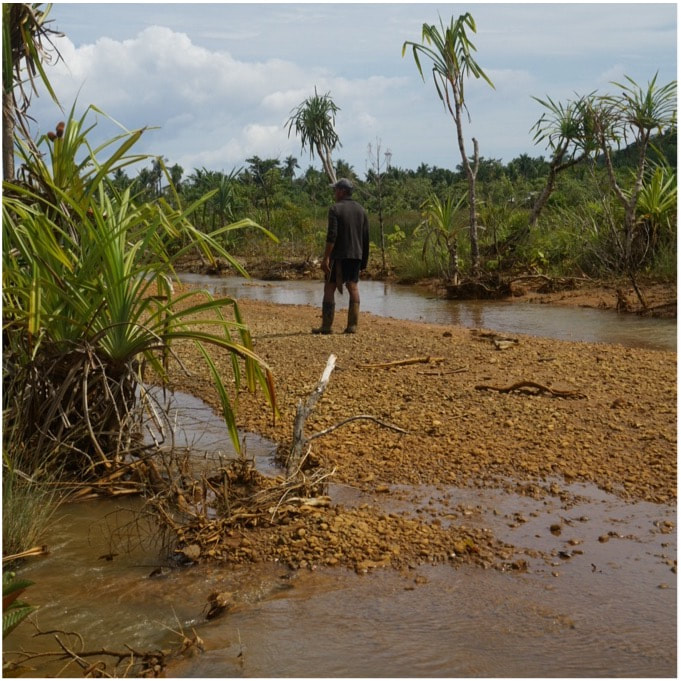|
By Angela Asuncion The province of Dinagat Island is a vast area rich in biodiversity and immense natural beauty. The island remains a critical habitat to approximately 100 bird and 400 plant species, with 20 globally threatened species listed in the International Union for Conservation of Nature. Dinagat remains home to some of the Philippines' most extensive bonsai forests, with endemic flora, wildlife sanctuaries and vital watersheds providing sustenance to local communities. Several watershed areas within Dinagat act as critical climate mitigating ecosystems. Typhoon Odette was the third category five typhoon to hit the Philippines in the last two years, with Dinagat being one of the most severely impacted regions. As the island remains amongst the most vulnerable regions in the Philippines to climate change and, resultingly, the increasing severity of natural disasters, the protection of these watersheds remain fundamental to food and water security, flood control, and disaster risk reduction. Dinagat Island is located in the Caraga region, the mining capital of the Philippines. Juxtaposed against its natural beauty is Dinagat Island's mineral richness. Dinagat is a national leader in nickel ore production, with PHP 4.01 billion in gross outputs in 2019 (MGB, 2019). In 1939 the province was declared a mineral reservation area due to its abundance of mineral richness. There are approximately 19 approved Mineral Production Sharing Agreements (MPSAs) and three joint operating agreements for large-scale mining operations. Mining claims encompass over half, 58,709 out of 80,212 hectares, of Dinagat Island's land mass. Although the province is known for its biodiversity, the primary land use in Dinagat has prioritized mining concessions. The islands' decades-long proclamation as a mineral reservation has led to overlaps between conservation areas and mining concessions. Although the Caraga region is known as the mining capital of the Philippines, it remains one of the most impoverished areas in the archipelago, with poverty incidences between 30-60%. Approximately 36% of families in Dinagat Island possess an income below the poverty line. However, rampant mining operations have led to extreme socio-environmental devastation across the island. Livelihoods and critical water and mangrove ecosystems have become decimated from siltation and chemical runoff from mining operations. On top of surviving a global pandemic and the impacts of Super Typhoon Odette, one of the world's most severe natural disasters, farmers share stories of zero harvests during the past two years due to the spillover effects of nearby mining which has devastated the agricultural capacity of the land. Community members have demanded accountability from the mines, but the companies profiting from this socio-environmental destruction have made a lack of reparations. To date, there remains a lack of regulatory oversight holding mining corporations accountable for the negligence of their operations. The infinite beauty of the region and the sustenance of the people relying on the land for survival in Dinagat remain threatened by the unruly impacts of unchecked mining operations. Today, affected local communities, farmers, fisherfolk, and women stand firm in their fight for land, water, food, identity and life. It is critical to ensure mining accountability safeguards are put in place, which prioritize local community livelihoods and the essential protection of climate-mitigating ecosystems over profits. Local communities are demanding change, aiming to hold corporations accountable, and we here at Bantay Kita are here to support them.
Comments are closed.
|
Previous Posts
May 2024
Topics
All
|
What We Do |
Know More |
About Us |
Contact Us
[email protected] | +(63) 917 5105 879 1402 West Trade Building, West Avenue, Brgy. Phil-Am, Quezon City, Philippines |









